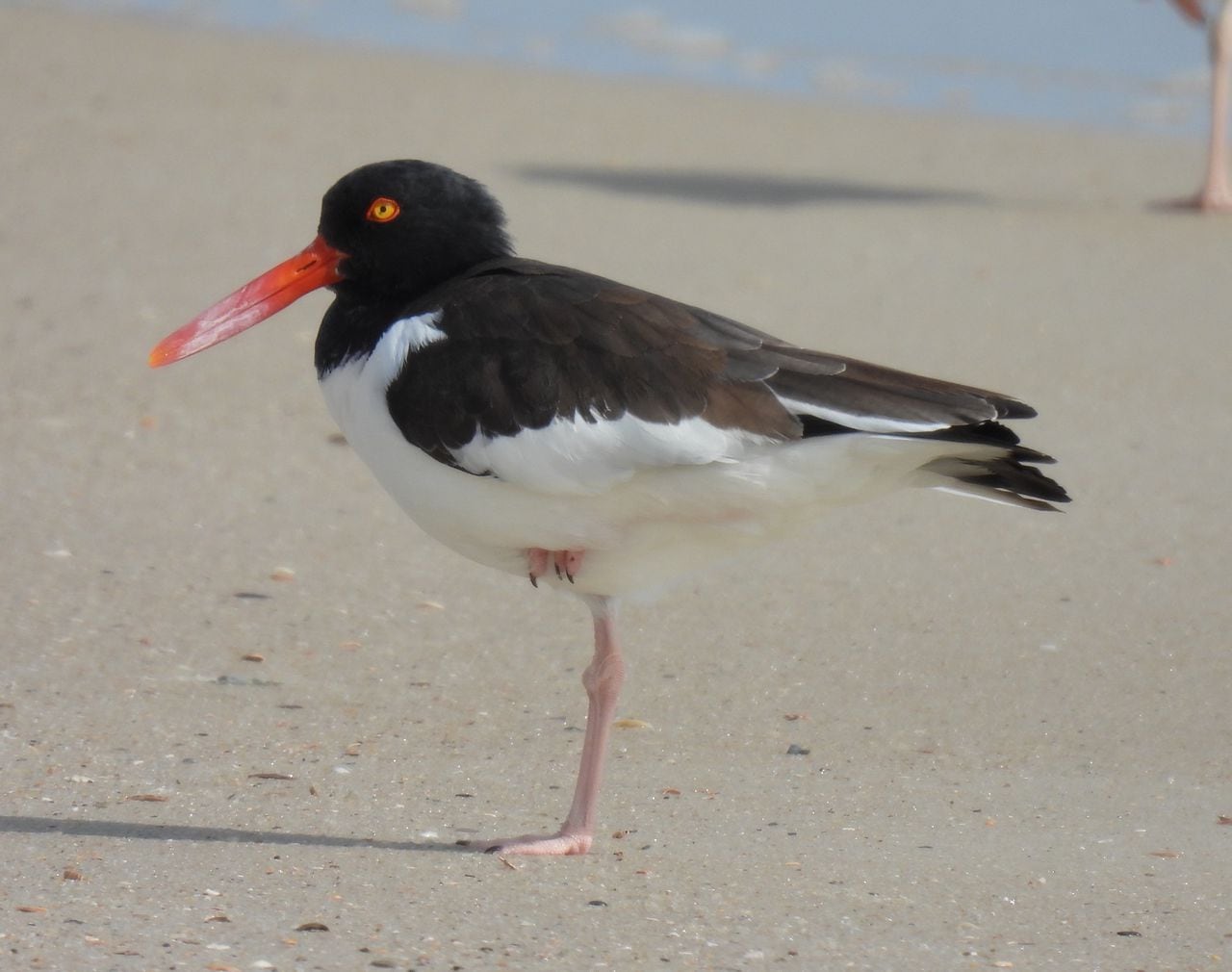Meet the shorebirds Dauphin Island is working to protect
The Town of Dauphin Island and Mobile County have released a plan detailing how to protect and restore the habitats of native bird and wildlife species that use the natural resources in the uninhabited West End of the island.
Environmental Science Associates, an environmental consulting group, prepared the Dauphin Island West End Bird Conservation and Management Plan in partnership with organizations including the Alabama Department of Conservation and Natural Resources the Department of the Interior.
The 223-page document contains information about potential threats to shorebird species and other federally listed species in need of protection, including the West Indian Manatee and Monarch Butterfly.
Ten species of bird are directly addressed in the plan, which is funded in large part with money from the Deepwater Horizon oil spill settlement intended to improve the local environment.
“We’re doing projects aimed at protecting and enhancing that bird habitat so that the birds can live to produce more offspring, be more successful, and we can get back some of that population that was killed by the spill,” said Nanciann Regalado, public outreach coordinator for U.S. Fish and Wildlife Services.
The West End was bought by the state in October 2020, according to a presentation about environmental projects hosted by Dauphin Island. Now that the land is publicly owned, the sensitive coastal habitat can be protected, allowing the recently released management plan to have true impact.
The plan also benefits the economy of Dauphin Island, which is one of the most popular places for birding on the Gulf Coast.
“I think we should care about birds to care about birds, because they’re beautiful, and people love watching them. They’re just a part of this dynamic and amazing coastal system that is Dauphin Island,” said Alabama Audubon Science & Conservation Director Lianne Koczur. “They are also bringing tourism dollars to Dauphin Island. That’s another reason to care about them.”
The West End plan is open for public comment until Dec. 4 and can be viewed on the town of Dauphin Island’s website.
Below are the 10 birds that are addressed in the plan with information gathered from Cornell University’s popular bird identification site, allaboutbirds.org. Each species name can be clicked on to view more information about them. Next time you find yourself on the Gulf Coast, keep an eye out for these unique birds.
American Oystercatcher.Photo courtesy Alabama Audubon
- Habitat: Shorelines
- Food: Aquatic invertebrates
- Nesting: Ground
- Behavior: Probing
- Conservation: Highest concern
These bright-red-billed shorebirds have a picky diet of almost exclusively shellfish, making the Gulf Coast a perfect place to live year-round. The American Oystercatcher can be heard from a mile away with their whistling call. Around autumn, Oystercatcher families will sometimes part ways in completely different directions, meaning the young truly do “leave the nest.” Because the Oystercatchers are the only birds in their environment that are able to pry open large oysters and clams, their food is sometimes stolen from other birds that have a taste for shellfish.
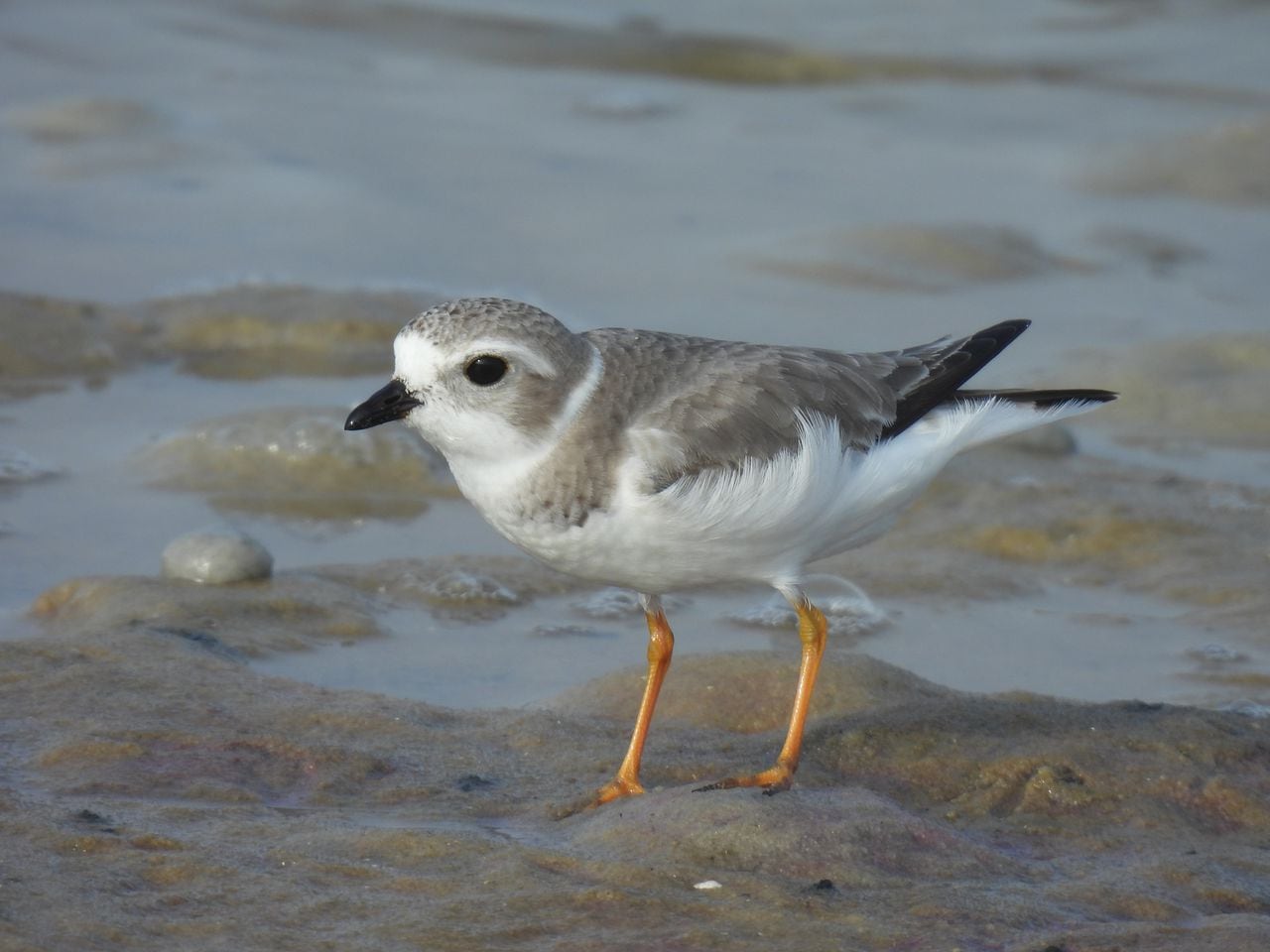
Piping Plover.Photo courtesy Alabama Audubon
- Habitat: Shorelines
- Food: Aquatic invertebrates
- Nesting: Ground
- Behavior: Ground forager
- Conservation: Highest concern
Piping Plovers are lone birds, preferring to forage alone or in small groups. Their soft, gray backs tend to blend in with the soft sand away from the shore where they nest. Despite their small and fluffy appearance, they can get territorial around their nests — intruders beware their painful pecking when peeking in Piping Plover parents’ pads.
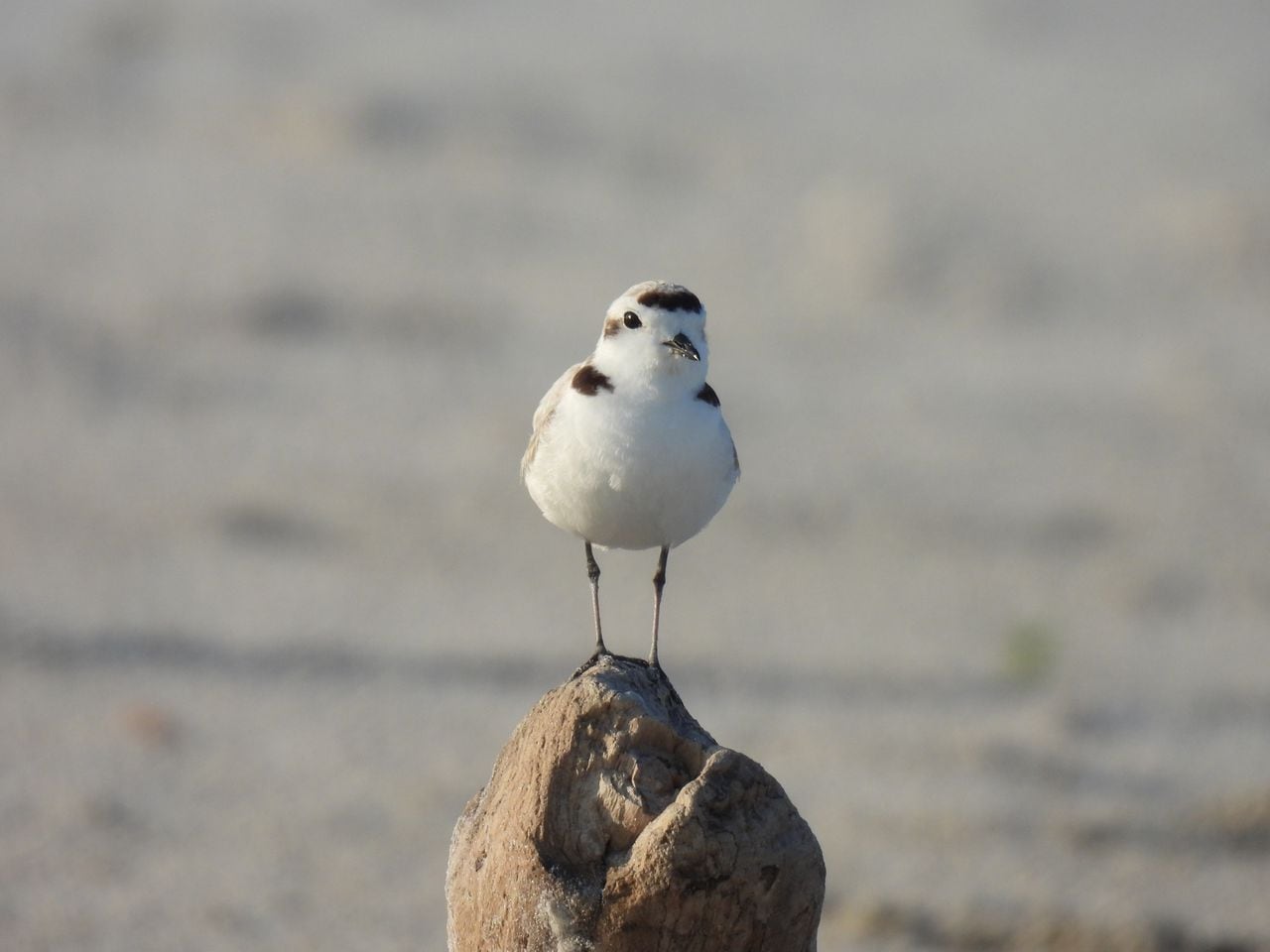
Snowy Plover.Photo courtesy Alabama Audubon
- Habitat: Shorelines
- Food: Aquatic invertebrates
- Nesting: Ground
- Behavior: Ground forager
- Conservation: Highest concern
Snowy Plovers also live on the shores with their nearly invisible nests, which young tend to leave within 3 hours of hatching and begin foraging unassisted. These inconspicuous, pale brown plovers will often raise two broods of young per year. The females will sometimes leave the first nest to find another male with whom to breed.

Gullbilled Tern.Photo courtesy Alabama Audubon
- Habitat: Shorelines
- Food: Insects
- Nesting: Ground
- Behavior: Aerial Forager
- Conservation: High concern
Gull-billed Terns gracefully swoop through the air as they gulp down insects. They enjoy a diet with variety — the terns will grab crabs and lizards from the sands and pluck fish from the water surface. Sometimes, they will even eat chicks of other tern species. They’re found around the world, from the Gulf Coast and shores of Mexico to the coasts of Asia and inland Asia.
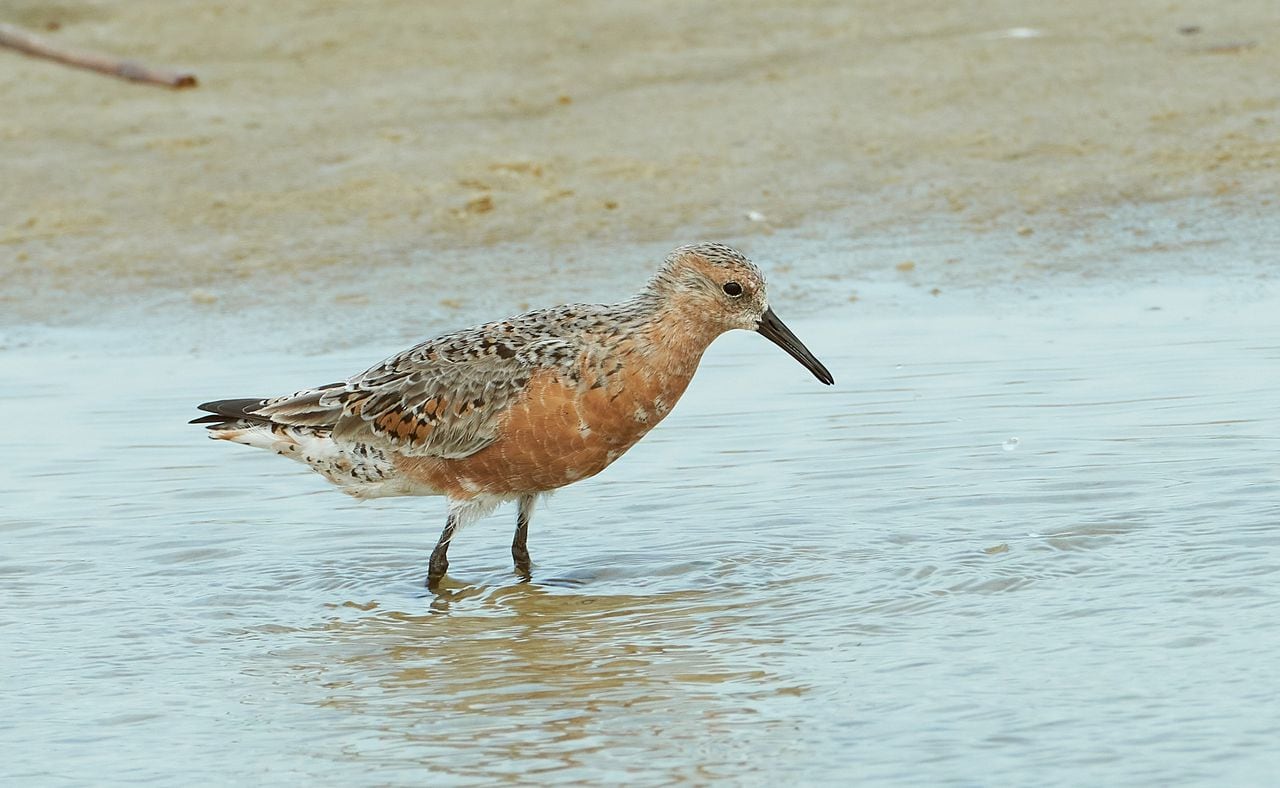
Red Knot.Andrew Haffenden
- Habitat: Shorelines
- Food: Aquatic invertebrates
- Nesting: Ground
- Behavior: Ground forager
- Conservation: High concern
The plump Red Knots sport a terracotta belly with a black, brown and white patterned back. They’re found everywhere except Antarctica; however, their populations in North America have declined in the last few decades. They have specialized sensory organs that allow them to sense differences in pressure to find food in the ground, but they often feed by sight. When they eat mollusks, they swallow the shells whole, and their larger-than-average gizzards crush them up to digest them.
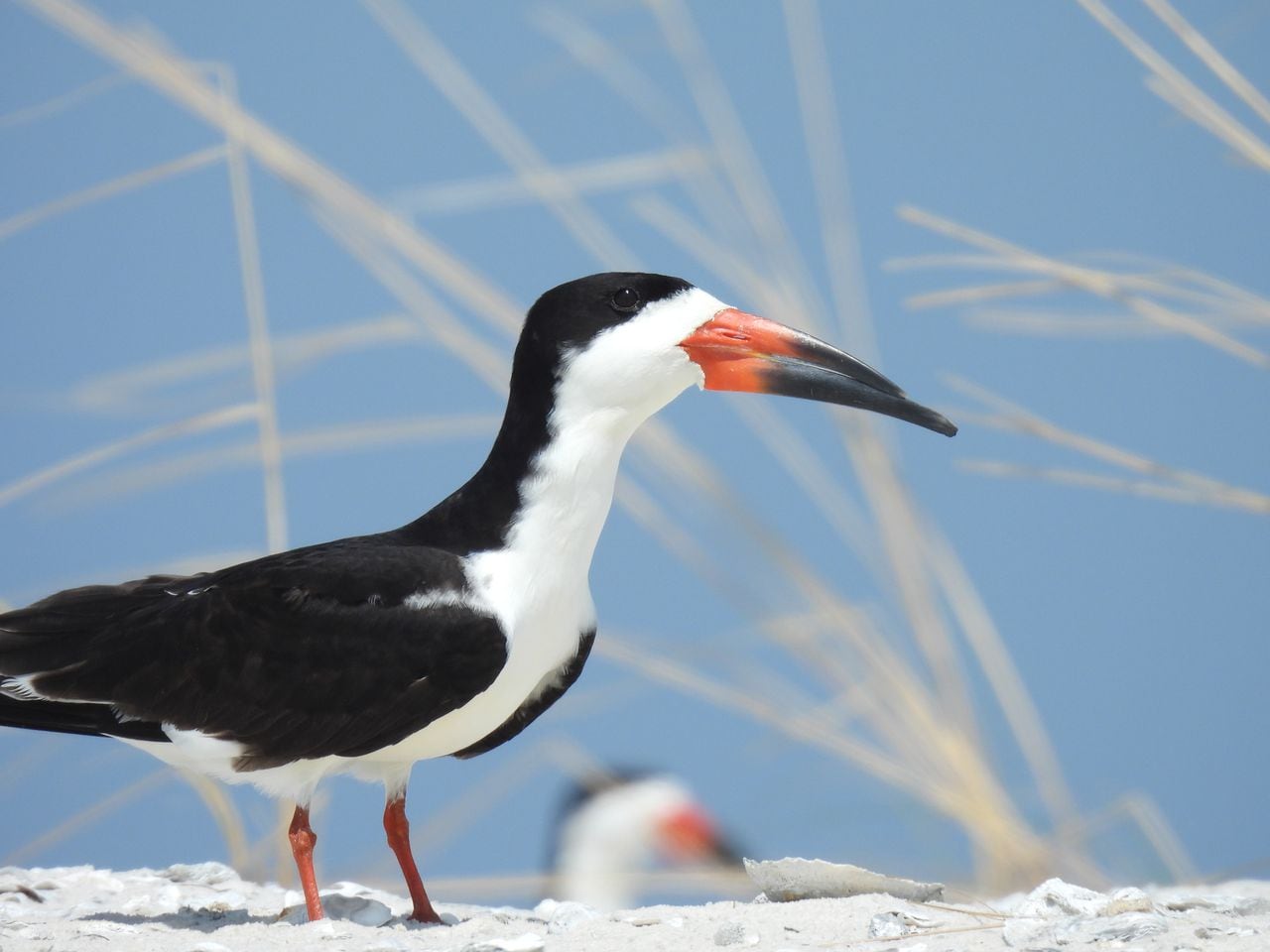
Black Skimmer.Photo courtesy Alabama Audubon
- Habitat: Shorelines
- Food: Fish
- Nesting: Ground
- Behavior: Aerial Forager
- Conservation: Moderate concern
The Black Skimmer, also known as the “seadog,” is mostly found in South America, but the Gulf Coast is also lucky enough to host them year-round due to the similar climate. Their beaks shift from a vibrant orange to a deep black, which makes it easily identifiable. This bird doesn’t tend to pay much attention to people, meaning it can fly within a few feet of beach-goers while foraging.
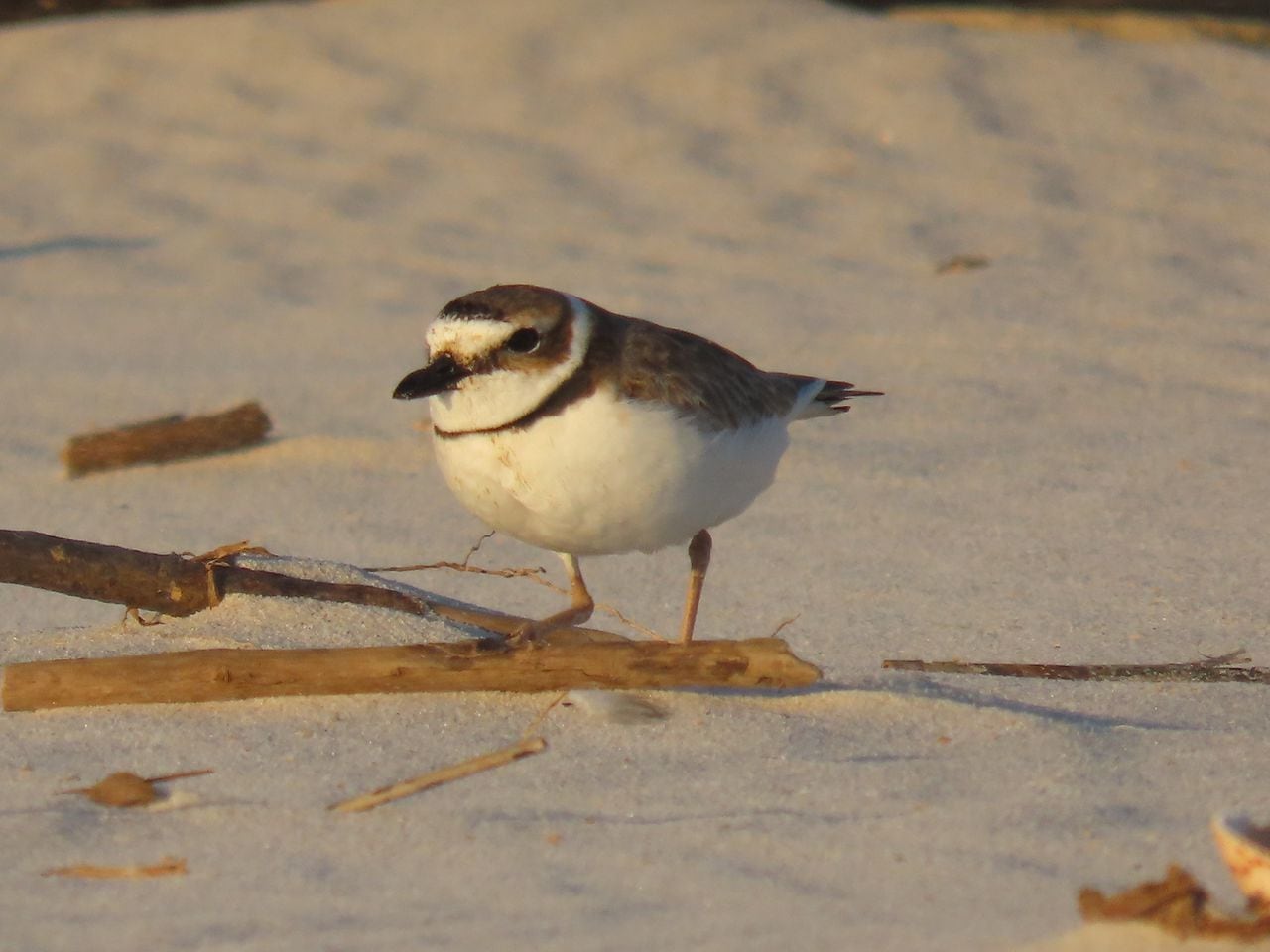
Wilson’s Plover.Photo courtesy Alabama Audubon
- Habitat: Shorelines
- Food: Aquatic invertebrates
- Nesting: Ground
- Behavior: Probing
- Conservation: Highest concern
The Wilson’s Plover was named in honor of Alexander Wilson, “the father of American ornithology.” They stick to the coastlines, where they can be found in northern South America, the southeast U.S., the west coast of Mexico and nearby islands. They are easiest to spot during low tide as they forage along the shore.

Reddish Egret.Photo courtesy Alabama Audubon
- Habitat: Marshes
- Food: Fish
- Nesting: Tree
- Behavior: Stalking
- Conservation: High concern
Reddish Egrets love to wreak chaos. They stir up sediment in shallow saltwater to find small fish to snack on by swooping low over the water in flight, moving quickly back and forth in the water and opening and shutting their wings. They migrate on the Gulf Coast and will often nest with pelicans or other herons.
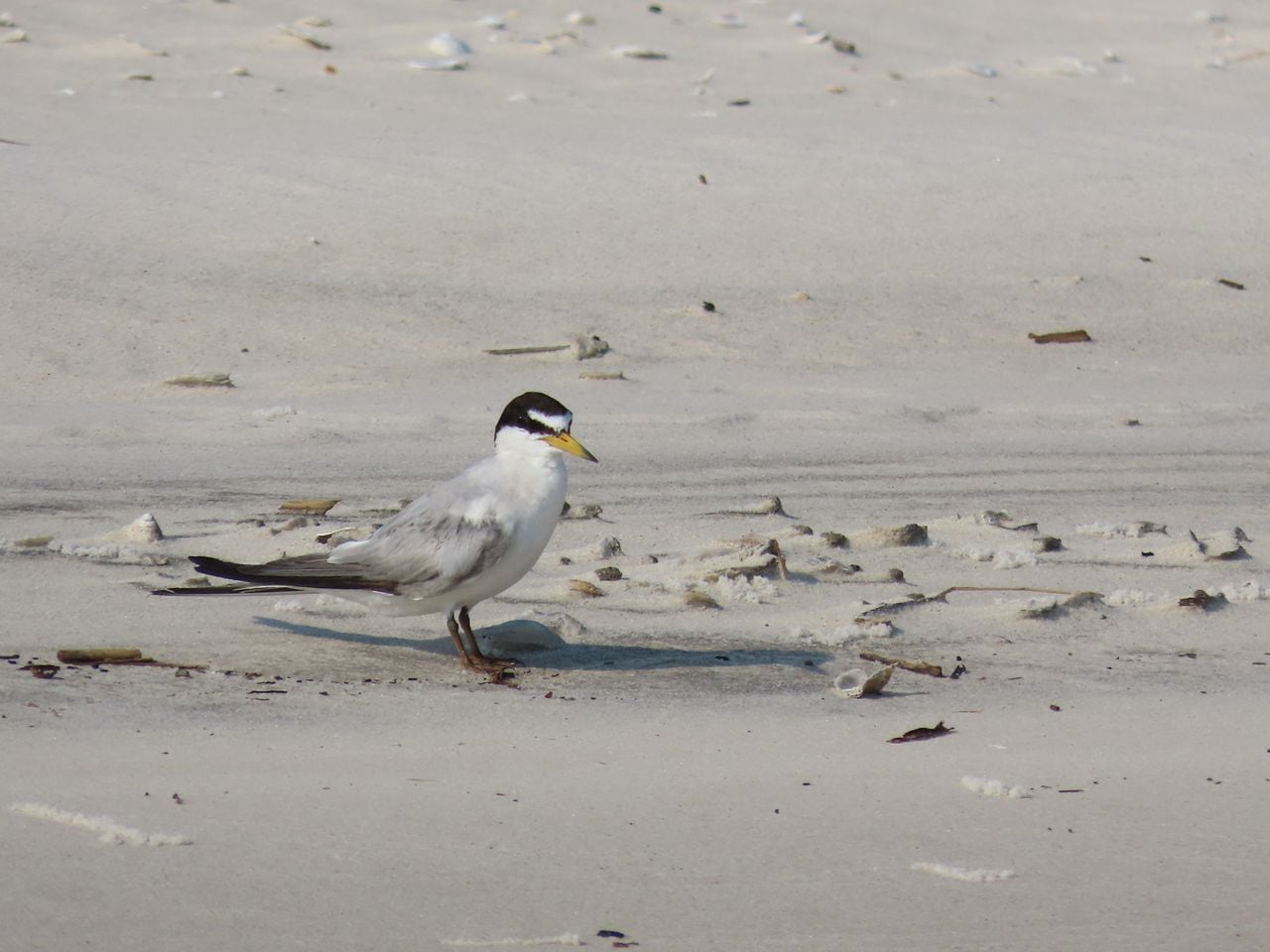
Least Tern.Photo courtesy Alabama Audubon
- Habitat: Shorelines
- Food: Fish
- Nesting: Ground
- Behavior: Aerial dive
- Conservation: Moderate concern
The Least Tern is a small, noisy bird with a yellow bill and body with a sharply contrasting black and white. The breeding males dive for small fish and often bring them back to feed their mates. They breed along the U.S. coast and around some inland rivers.
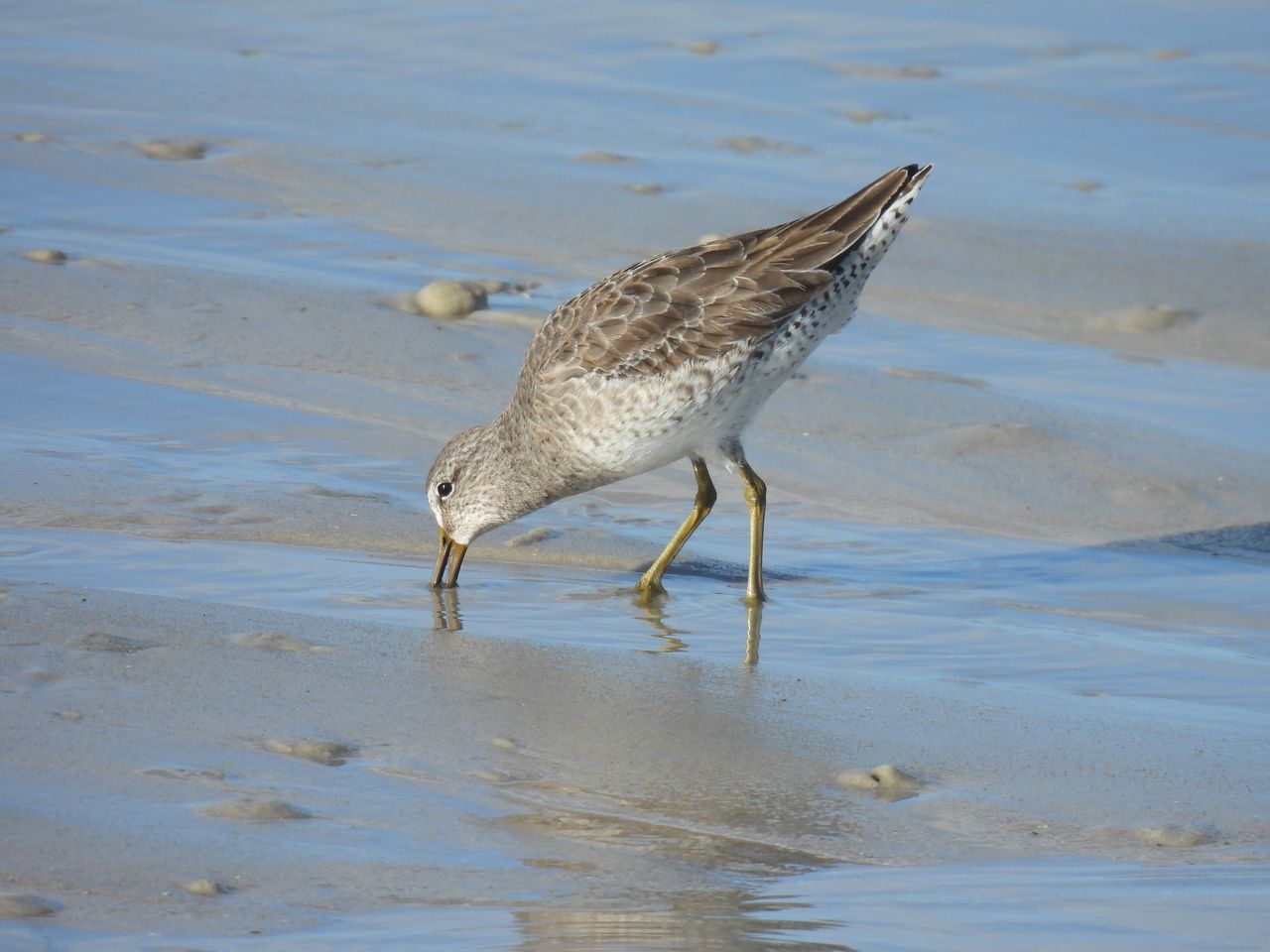
Shortbilled Dowitcher.Photo courtesy Alabama Audubon
- Habitat: Marshes
- Food: Aquatic invertebrates
- Nesting: Ground
- Behavior: Probing
- Conservation: Moderate concern
The Short-billed Dowitcher sports a chunky body with, ironically, a very long bill. They’re found in wetlands across North America, and it feeds by rhythmically moving it’s bill up and down in the ground like a sewing machine needle. It tends to move up north into Canada to breed. Once eggs hatch, only the male Dowitcher takes care of the young.
